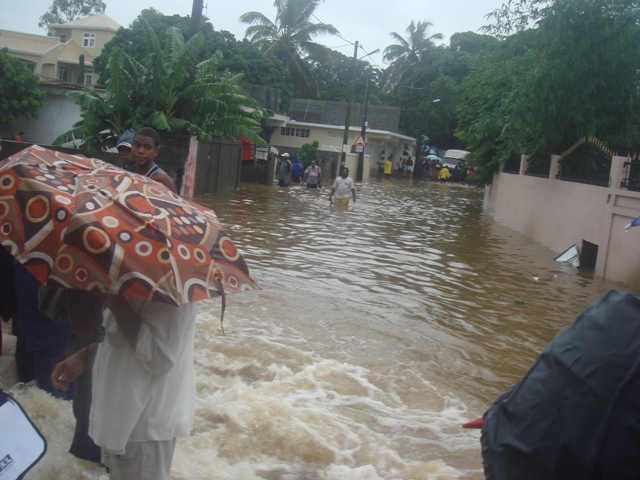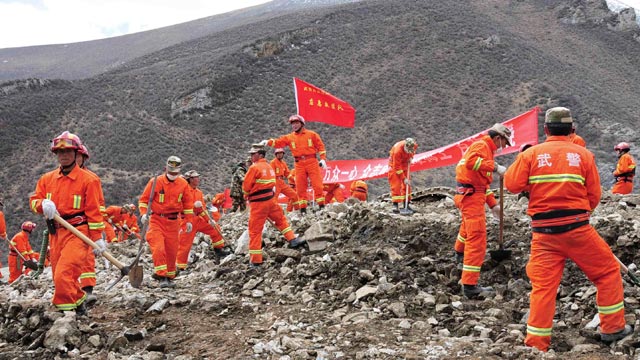
As the death toll from the 16-storey building that collapsed in Dar es Salaam rose to 22 yesterday afternoon, there was fresh scare just opposite the ill-fated structure which scared off President Jakaya Kikwete and his security men from the rescue site.
The president, who was scheduled to visit the tragic site for the second time yesterday, failed to arrive at the area after rumours spread that another building owned by the same person and constructed by the same contactor could also collapse.
President Kikwete was scheduled to arrive at the site around mid-day but his security officers detailed him some 60 metres away from the rescue area.
However, Prime Minister Mizengo Pinda had earlier visited the area, where he hailed rescuers for their efforts.
As the operations is going on, the government has ordered people who are living close to the remaining 16th building owned by the same owner of the ill-fated structure to vacate their premises for their safety following reports that, the twin building is likely to cause a danger in future.
However, the Dar es Salaam Regional Commissioner Said Meck Sadiq issued the order yesterday which up to now almost many people who had hired the residential apartments close to the feared building have vacated.
One of the residents in the area, Amir Khan of the Asian origin told The Guardian yesterday at the are that, he is appealing to the government to do quick investigations on the building and if possible it should be destroyed for the safety of the people around.
Meanwhile the SACP Suleiman Kova held a press conference at the site later in the evening at around 14:30 hours and said that, so far six people are being held by the police for interrogation in connection with the matter.
According to him, the construction of the collapsed building which stood on plot number 1662/75 had been given a permit for construction when it was agreed that, it was supposed to have 10 storey on its completion. But to the great dismay, other 6 storey had been added by whose authority, he queried.
Commander Kova is on the view of the fact that, the two National Boards would help to carry a soil test for the debris which he said has already been taken for hammer test to a disclosed scientist who he couldn’t mention as it is too earlier and moreover for security purposes.
He also said that, about 22 bodies have been retrieved from the scene since the rescue operation started that morning on Friday, and out of these 8 bodies have been identified. He added that, the government would finance the purchase of shrouds and coffins for the dead ones.
However, he further noted that, 17 people who sustained injuries are still in hospital receiving medical treatment.
Meanwhile, the Dar es Salaam Regional Commissioner Said Meck Sadiq has cautioned Dar es Salaam residents and Tanzanians as a whole to be patient as the government is closely working to find out the right cause of the accident and will be getting updating information in connection with the issue.
“This is a national disaster and I am appealing to all people not to take any loophole and disengage in any matters that would disrupt investigations which the government has started to collect in order to get the truth of the matter” he said and insisted people to be calm as this is being worked out.
The Friday’s accident could be the worst tragedy involving four series of the collapse of high-rise buildings in the country since independence time. On August, 1987 a four-storey building under construction collapsed along Msimbazi Street, killing seven people.
In 2006, a three-storey building in Chang’ombe area collapsed, injuring several people. Former Prime Minister Edward Lowassa formed a team to investigate the incident but its findings and recommendations are yet to be made public to date.
In 2008, a ten-storey building along Mtendeni Street in Kisutu area also collapsed, injuring some individuals.
In another development, relatives of the people who died from the collapsed building have so far identify only eight bodies of their loved ones – but difficulties of identity could force the government bury them without traditional rites.
“I’ve been here since yesterday looking for the body of my father who died in this building. I have yet to identify his body, ” said Noel Eliakim
Noel is not alone. Abdalh Salehe who is also at the MNH to identify his father, says he failed to recognize his body because he felt confused after seeing so many mutilated bodies.
“ … it is very hard to recognize your beloved one because some of them have no heads … so you have to look at other parts like legs to identify him or her … but some of them have neither legs nor heads … they are completely destroyed,” Salehe complained
Meanwhile, the Deputy Minister for Health and Social Welfare, Dr. Seif Rashid, who visited the MNH yesterday said four of the eight victims admitted at the hospital were discharged yesterday.
Dr. Rashid, however, explained there could be more casualties.
Sunday 31 March 2013
http://www.ippmedia.com/frontend/index.php?l=52954





